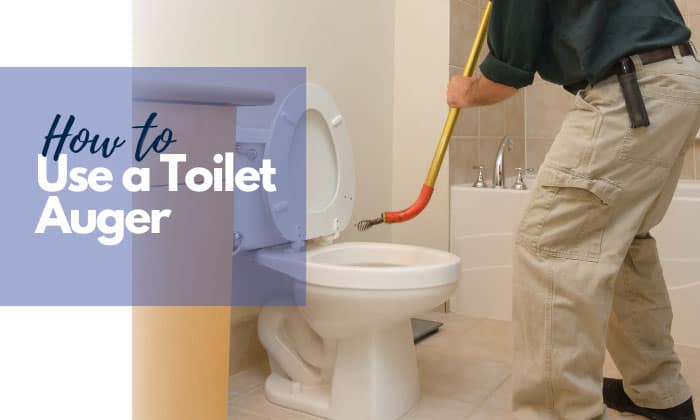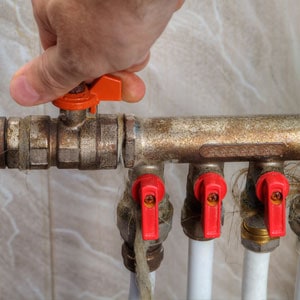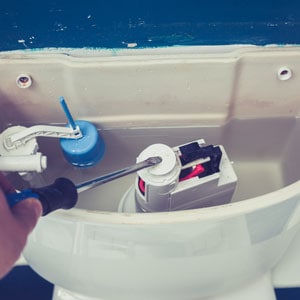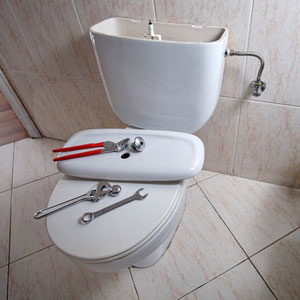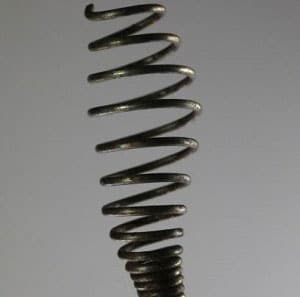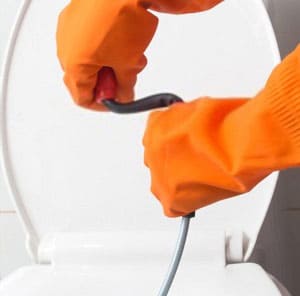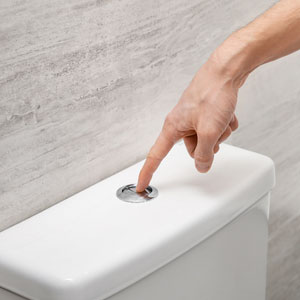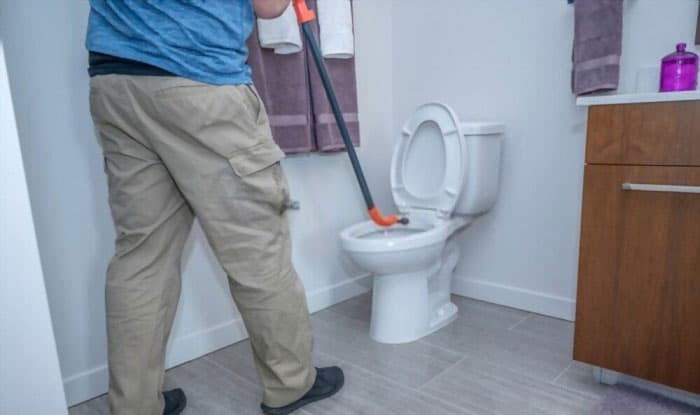You would almost always depend on the good old plunger when your toilet needs unclogging. But what if it is not enough to dislodge the stubborn blockage down there?
Say hello to the toilet auger – another reliable tool specially designed for toilet clogging problems. This also goes by the name closet auger, plumbing or toilet snake, and others.
What’s more, using a dedicated auger for toilet clog provides your toilet with protection from possible scratches compared to using normal drain augers or snakes.
With the help of this guide, learn how to use a toilet auger properly to dislodge that clog quickly.
Table of Contents
Step-by-Step to Use a Toilet Auger
What to prepare:
- Toilet auger
- Rubber gloves
- Bucket
- Dipper
Step 1: Shut off water supply
The first thing to keep in mind while using a toilet auger is to prevent possible causes of overflow. Do this by turning off your toilet’s water valve before starting anything.
Step 2: Reduce toilet water level
Another step to prevent the possbility of overflowing is to reduce the amount of water the bowl holds. This step may be unsanitary, but it is a necessary one.
Put on some rubber gloves and scoop the toilet water out of the bowl and into a bucket.
You will also need to close the water valve to cut off water supply in the tank. After this, proceed to scoop out water from the toilet tank to avoid unwanted flushing into the bowl.
Step 3: Position the cable into the toilet opening properly
Make sure first that the auger cable is pulled all the way back such that it is close to the curved end. You may now safely insert the cable into the toilet’s opening.
This is what sets the toilet auger apart from other drain snakes: its head guard / sleeve will ensure that the porcelain will be free from scratch as you insert the auger cable.
You will know that you have inserted the auger properly when you no longer see the auger cable’s end; only the head guard / sleeve and the tube is left visible.
Step 4: Push the cable first
Start by twisting and pushing the cable down. Feeding the cable first lets you guide the auger cable through the toilet traps’ initial bends and angles.
Doing this will require putting in some effort. Because of this, it is inevitable to scratch the insides of the toilet trap.
This should be fine since this part of the toilet is not visible. What a toilet snake auger ensures you is a reduced risk of scratching the toilet surfaces, which are visible.
Step 5: Crank the handle
You may now start cranking the handle clockwise; still continuing the downward push. Alternate the rotation when you feel resistance; it could take a couple of motion switches to insert the entire cable.
To effectively use a drain auger on a toilet, you will need to exert considerable effort; but don’t use too much force as it will just get entangled.
Work the cable down gently and patiently. Eventually, the cable will be extended fully. Crank it a few more times to ensure it picks up or breaks down the accumulation.
Step 6: Retract when done
After the last rotations, crank and pull the cable backward to retrieve it. Start rotating counterclockwise and reverse the motion if necessary, all the while pulling it up.
As you retract the cable, it may have picked up small debris on the way in and out. But if it doesn’t have anything, it may mean that it broke down the blockage possibly.
Make sure that the cable’s end reaches the protective sleeve before carefully removing the auger from the toilet opening. With this, you now know how to use a toilet snake properly.
Step 7: Test for functionality
Finish up by checking if the toilet has been unclogged successfully. The toilet should flush normally when the clog has been cleared.
If it does, you may now switch on the water valve and flush again to confirm. When the water goes down, you have now successfully unclogged your toilet while using a toilet auger.
But, if upon flushing, the water level goes down slowly, or does not go down at all, then you will need to repeat the process and use an auger to unclog a toilet again.
Overall About a Toilet Auger
1. Definition
Known by its many names such as closet auger, plumbing snake, toilet snake, and others, the toilet auger is a type of drain snake designed specifically for unclogging a toilet.
An auger looks like a long cane with a crank handle on top; less bulky, but taller, compared to normal drain snakes who have bare metal coils/cables.
It is characterized by its head guard / rubber or plastic sleeve that ensures it would not scratch the toilet surface, unlike other normal snakes with bare cable.
2. Parts
The toilet auger has relatively simple parts:
- Metal cable / coil
- Auger head
- Plastic tube casing
- Crank handle
- Head guard / protective sleeve
3. Purpose
It is an efficient tool to break through the clog as it travels the pipes. It can either pick up or break down the accumulating debris.
The toilet auger can reach inside the toilet trap thanks to its flexible metal coil. It has a head guard that prevents the coil from scratching the toilet surface when feeding it inside the opening.
What is the Difference Between a Toilet Auger and a Toilet Plunger?
| Toilet Auger | Toilet Plunger |
| Removes the clog by either breaking it down or picking it up with the metal coil | Creates pressure that ‘pushes down’ the blockage; forcing it to the sewer lines |
| Ranges from $25 to $30 | Not more than $20 |
| Can only be used in toilets | Can be used in sinks, shower or tub drains, and toilets |
| Handle hard pieces, including wedged toys | Handle softer construction |
| Effective, protects from scratches, has deeper reach | Cost-efficient, reliable, versatile |
FAQs
Can an auger damage a toilet?
Toilet auger minimizes the risk of scratching the toilet’s porcelain surface. But it is still possible to damage the toilet, especially if the tool is not used properly.
Make sure that before inserting or removing the auger’s end into the toilet opening, the cable is pulled all the way up so it does not touch the surface of the bowl.
What happens if the toilet auger doesn’t work?
As you use an auger on a toilet, and if unfortunately it does not work, this could mean that the clog is severe and still intact in your drain, the cable screws are loose, or you may have the wrong type of drain snake.
Make sure that all screws are tight so that the cable can rotate properly. Also, it is recommended to use toilet auger as these are specifically designed for safe toilet clogging.
Lastly, if the clog is very severe, you may want to try other home remedies (hot water, baking soda + vinegar, dish soap, etc.) then try plunging or snaking the drain again.
Is it easy to use a toilet auger?
It is easy to learn to use a toilet auger properly. Once you are familiar with the key points discussed in the article, using an auger becomes as basic as plunging a toilet.
Take note of the following important points in using the auger properly:
- Pull the auger cable all the way up before inserting or removing the auger itself
- Make sure that the metal cable/coil does not touch the porcelain surface
- Crank the handle gently, slowly, and patiently
- Exert controlled force; since too much can get the cables entangled
- Alternate between clockwise and counterclockwise when resistance are met
Is a toilet auger better than a snake?
Toilet augers are generally better for toilets since they provide added protection while offering the same purpose. But drain snakes are more versatile since they can be used in other fixtures.
Identifying the better tool between toilet auger vs snake would depend on the user. For beginners and those who don’t want scratches on their toilets, the auger is for you.
But for those who are already experienced, the drain snake, or drum auger, can be a cost-efficient tool since it can also be used to unclog sinks as well as bathtub and shower drains.
To use a drum auger on a toilet without scratching the porcelain is undoubtedly difficult as its bare cables can be out of control while you are rotating.
How long of a toilet auger do i need?
The normal 3 to 6 feet toilet auger should be enough as a home remedy.
If the obstruction is deeper beyond the reach of the auger, trying other methods or calling professionals are already recommended.
Is it safe to use a diy toilet auger?
Preventing scratches is not guaranteed when making a DIY toilet auger. But it is undoubtedly a great alternative when in dire need.
Commonly, wire clothes hanger are used to produce a makeshift snake. But as expected, this will likely scratch the porcelain surface.
Conclusion
The toilet auger is a specific tool used for unclogging a toilet without scratching its surface. Once you’re familiar with it, you can breeze through any possible clogs.
By remembering the important points mentioned, you’ll have a better understanding on how to use a toilet auger properly and you’ll be able to break through that clog one crank at a time.
Related: 6 ft vs 3ft toilet auger

I’m Paulk Webb, and I work as a writer for Saveourwaterrebates. I’m happy to put in the time and effort to conduct market research to identify the most pressing issues faced by households concerning their plumbing. Feel free to check out our guides to get the most informed recommendations for how to solve your problems.


